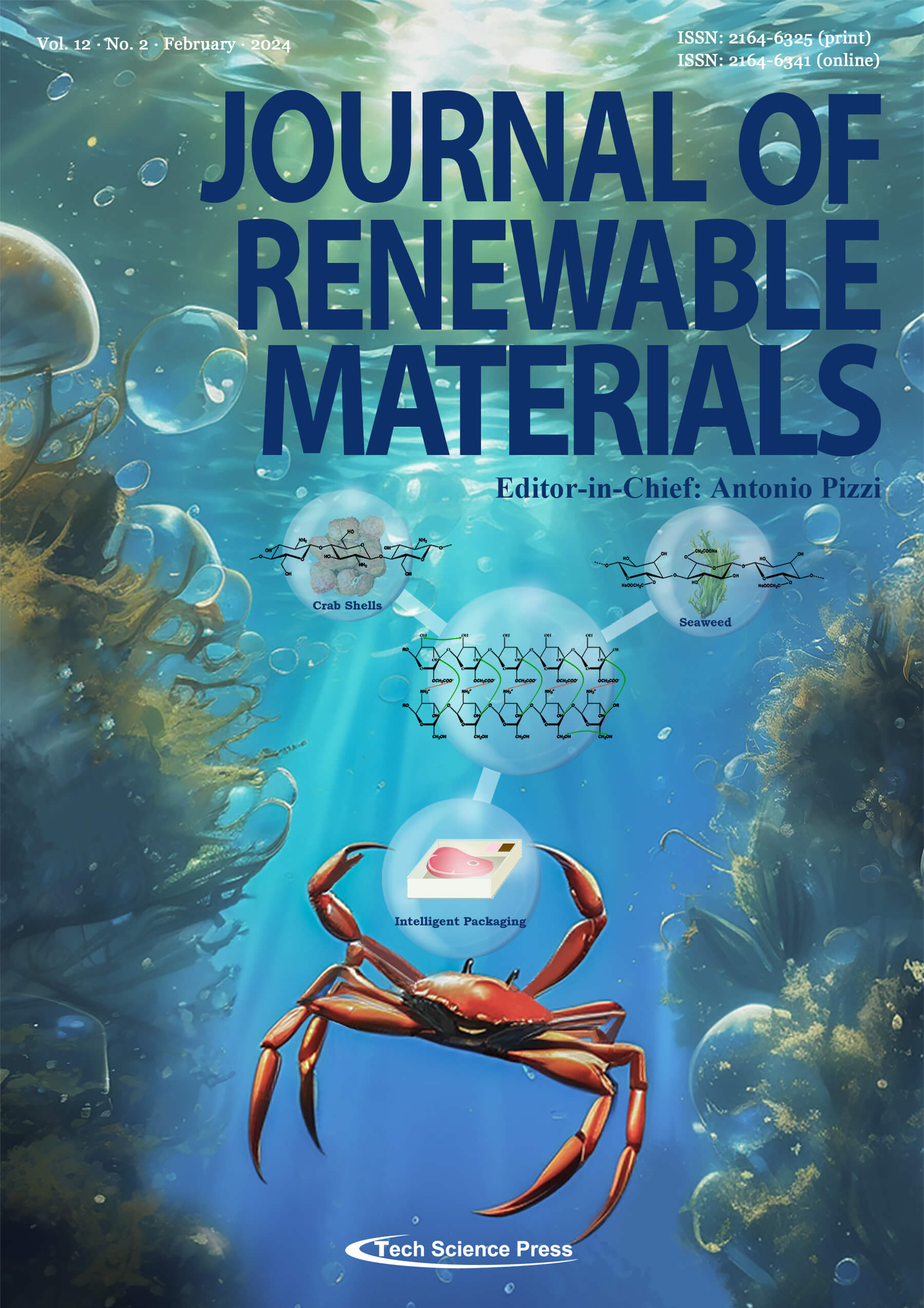Preparation of Environmentally Friendly Urea-Hexanediamine-Glyoxal (HUG) Resin Wood Adhesive
Qianyu Zhang1,2,#, Shi Chen1,2,#, Long Cao1,2, Hong Lei3, Antonio Pizzi4, Xuedong Xi1,2,*, Guanben Du1,2
Journal of Renewable Materials, Vol.12, No.2, pp. 235-244, 2024, DOI:10.32604/jrm.2023.029537
- 11 March 2024
Abstract Using non-toxic, low-volatile glyoxal to completely replace formaldehyde for preparing urea-glyoxal (UG) resin adhesive is a hot research topic that could be of great interest for the wood industry. However, urea-glyoxal (UG) resins prepared by just using glyoxal instead of formaldehyde usually yields a lower degree of polymerization. This results in a poorer bonding performance and water resistance of UG resins. A good solution is to pre-react urea to preform polyurea molecules presenting already a certain degree of polymerization, and then to condense these with glyoxal to obtain a novel UG resin. Therefore, in this… More >
Graphic Abstract
